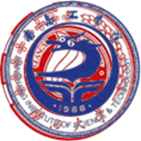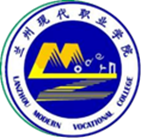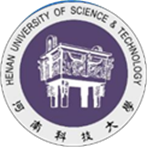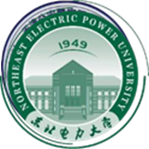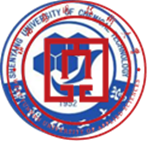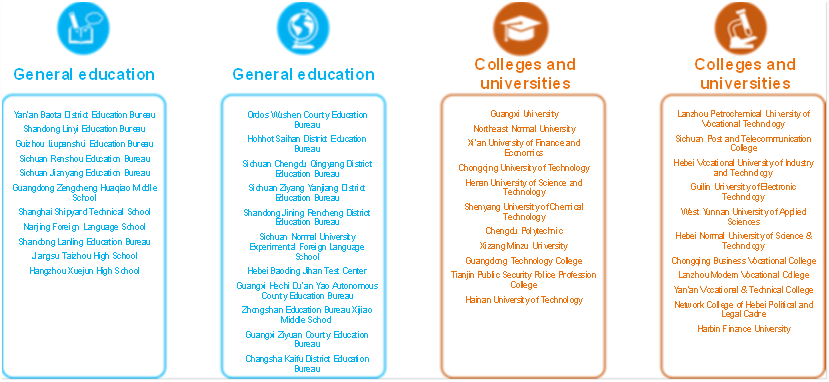Country / Region
Full-Stack Digital Teaching Space
1. Solution overview
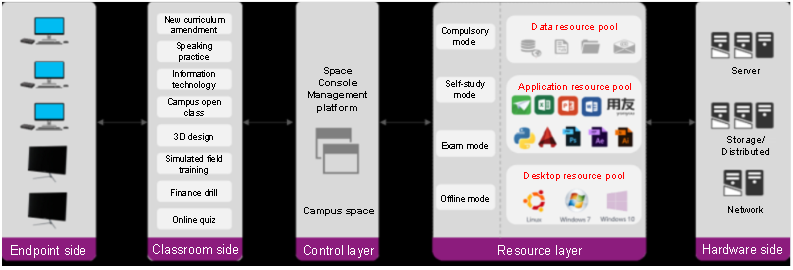
H3C Learningspace is a desktop solution that H3C developed based on the hybrid architecture with Virtual Desktop Infrastructure (VDI) and Virtual OS Infrastructure (VOI) for education scenarios. The solution features the on-cloud flexibility of VDI, centralizes resources (such as the system, application, and data), allocates virtual desktops to students on demand, and uses fat clients to meet the high load requirements of curriculum reform, 3D modeling, and video processing at low costs.
The solution consists of the data center, transmission network, and terminals. The data center includes the server cluster, distributed storage, Learningspace system (administrator, teacher, and student), agentless antivirus software (optional), load balancing function (optional), and value-added application system (optional). The transmission network includes the management network, service network, storage network, and terminal access network. The terminals include the fat/thin clients for students and the teacher clients.
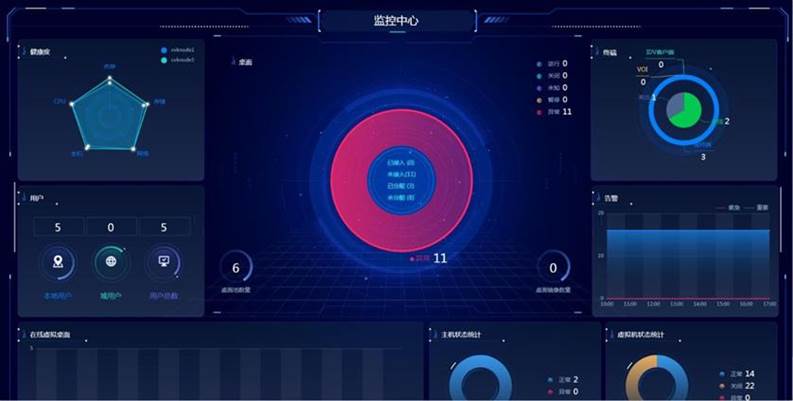
Space Console provides centralized control and unified management. The fat/thin client has access to the data center to obtain desktops. The teacher client divides permissions to regulate all behavior on the clients and desktops within the classrooms. Learningspace can meet various requirements on teaching and training, switching between multiple desktops, workspace, self-study, national exams, developing and programming, and 3D designing in the computer room scenarios of general education, vocational education, and higher education.
2. Solution highlights
2.1 Simple deployment with efficiency improved by 10 times
A web-based management console enables H3C Learningspace to achieve remote O&M, as well as centralized management and unified monitoring of data center resources. The overview page visually displays system health, the total number of courses, classrooms, and users, desktop operating status, resource usage, and abnormal alarms. Detailed information can be viewed on each module of them.
Automatic installation: The all-in-one server is installed with all the necessary programs before delivery. Other programs such as bare metal installation, underlying virtualization, distributed storage, and management platform programs are packaged and can be imported as an image. Then, the next step is automatically executed until the installation is completed.
One-click inspection: Inspection can be performed on demand upon the completion of deployment for later maintenance and fault locating. The one-click health check function enables the platform to automatically detect hidden threats in the system and offer optimization suggestions. Template optimization: The course mirror performs hundreds of performance optimization operations on the operating system with the automatic optimization tool to improve the desktop experience.
Automatic upgrade: After an upgrade package is uploaded to the management platform, all clients automatically detect and download the package, and the upgrade is automatically completed in the background on the server, teacher client, and student client without manual intervention.
Learningspace leaves the complex code logic to the R&D department and presents simple operations to the front end, reducing the workload and improving efficiency.
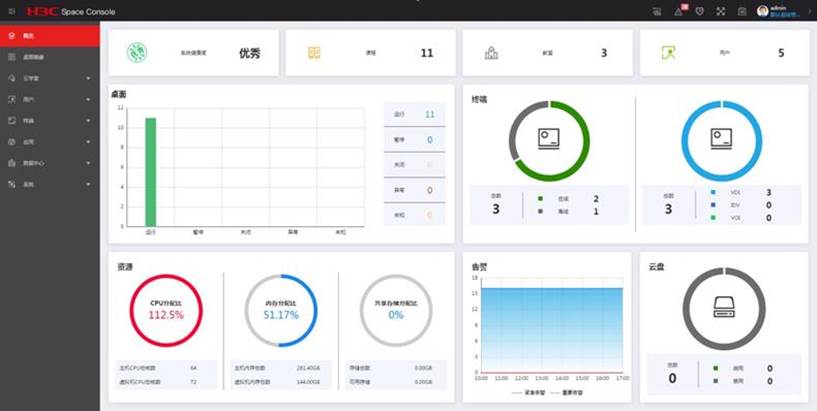
2.2 Multiple teaching methods for dynamic classroom
Learningspace has a built-in teaching management software that is developed by H3C for education scenarios.
Basic features: template switching (one-click taking/ending the class and exclusive templates for different courses), screen broadcasting, checking-in, student presentation, file receiving and sending, screen monitoring, one-click network disconnecting, one-click restart, seat adjustment, USB flash drive disabling, full-screen silencing, self-study mode, account mode, virtual classroom, remote assistance, and electronic pointing device.
Audio features: voice broadcasting, group discussion, student speaking, voice meeting, and private communication.
Special features: live streaming of courses and basic courses of the big class. On the teacher client, a teacher can combine multiple classes into a big one for unified teaching and control.
Various common functions enable Learningspace to make breakthroughs in both good experience and cost-effectiveness. Besides the built-in software, it also supports the seamless integration of third-party multimedia teaching software to ensure that teachers can keep their teaching habits developed over many years and thus reduce learning costs.
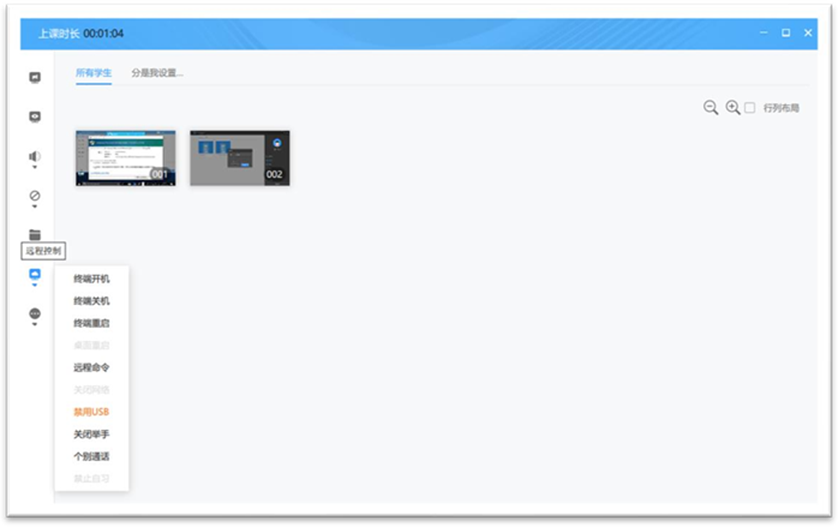
2.3 Reduce steps of tests and exams
Paperless exams are gradually replacing paper exams by virtue of confidentiality, environmental protection, and efficiency. Learningspace has a built-in test platform and automatic deployment mode for the exam environment.
Classroom test: Teachers can initiate assessment tests in the form of preemptive answering, compulsive answering, and random roll call. By the end of the test, the system automatically grades the paper, and then the test results are recorded in the student score system. The ranking is displayed on the scoreboard of the campus space for teachers' reference when evaluating the quality of students' learning.
Test environment deployment: It supports various test scenarios, including Level 1 and Level 2 of the National Computer Rank Examination (NCRE) and other Chinese accreditation tests, and meets the deployment requirements of ATA service and NCRE in China. It provides the exclusive test image that can reserve the period of self-defined test desktops (complete desktop environment with files and data) for review if any objection exists.
Both paper grading and manual environment deployment of PC produce a heavy workload. Instead, Learningspace is developed with multiple automated processes, saving effort and time as much as possible and making teachers have high work efficiency.
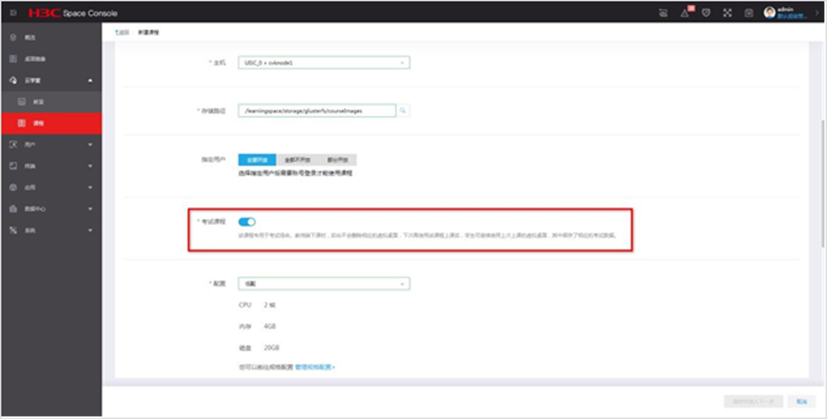
2.4 Shared cloud drive with no need for hardware-based copy
Learnignspace provides the built-in cloud drive function with distributed storage, ensuring data security. Each teacher and student can obtain a private campus cloud drive that permanently reserves personal data during the academic years. They can have access to their data not only in the cloud environment but also in the areas covered by the campus network in case of the unavailability of USB flash drives, which also prevents the transmission of viruses. It supports category-based searching and file sharing, allowing limitless data sharing and improving students' interest in learning with the workspace function.
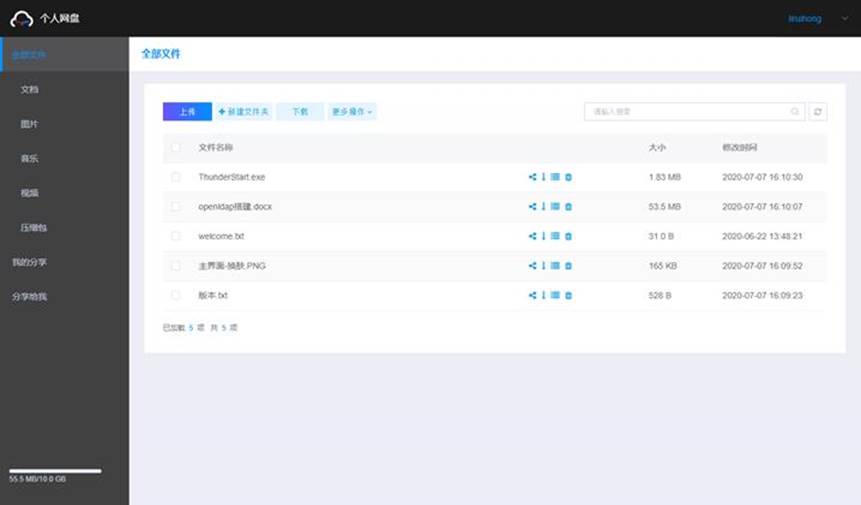
2.5 Optimal performance for 3D applications
As one of the few VDI vendors authorized by NVIDIA in China, H3C has the virtual GPU (vGPU) technology that enables enterprise graphics cards to be virtually divided, so that the high-performance GPU computing power can be allocated to cloud desktops, greatly enhancing the graphics processing capabilities of the VDI architecture. The video memory can be divided on demand and allocated flexibly to achieve the smooth operation of 3D applications of OpenGL and DirectX. The graphics card resources are centrally managed in the cloud, and the visualized monitoring and management of GPU resources greatly reduce O&M costs.
At the same time, Learningspace offers a more cost-effective solution. VOI components support the full performance of the hardware of the fat client and provide the lossless CPU and integrated graphics for high-load application scenarios including graphics design or video processing. The backend requires fewer server resources, saving the construction cost of the data center. The built-in cloud drive function can roam the files and data produced by the client, ensuring security and convenience.

2.6 Workspace for fun
Teachers can create their course groups that contain the student accounts of the courses. Students have corresponding access to the course groups and perform operations using browsers. In this way, students can do their homework anytime and anywhere, not limited to specific environments such as classrooms, dormitories, and libraries.
On-cloud homework: Teachers can edit and release assignments in the course groups, and set deadlines for submitting the homework that is visible to students of the groups. Overdue submissions would be rejected by the system.
Comment and interaction: Teachers mark and grade the test on the platform that automatically presents statistical reports, including the number of submissions and average score. Teachers can make the excellent submission public for all the students to comment on it.
Micro-course space: A teacher can reserve the whole course content by screen recording and upload it to the micro-course space, sharing it as an open class or video. Students can review the video on demand to learn, like, comment, and reply.
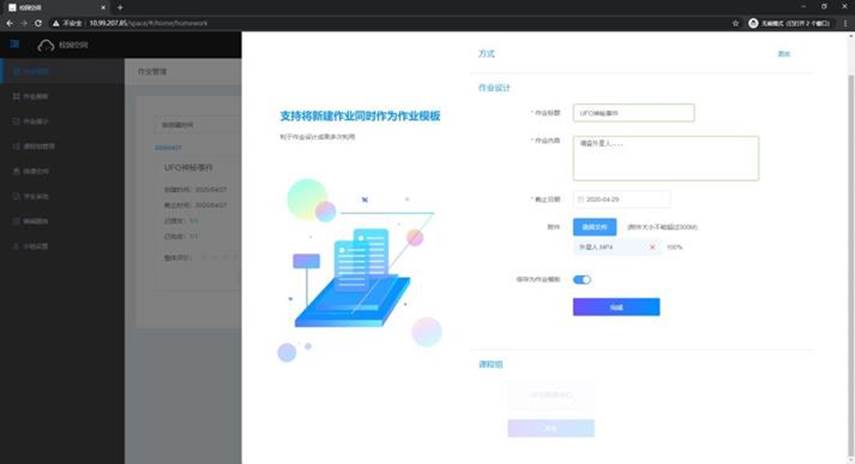
Teacher's role:
Student's role:
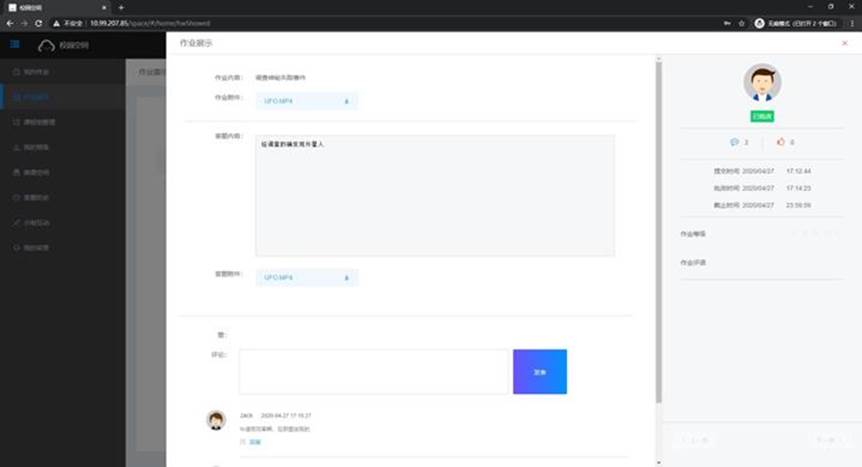
2.7 Security mechanisms for assurance
Learningspace has multiple security mechanisms for eliminating hidden risks.
Cluster technology: It distributes the student desktops in each classroom evenly to all cloud hosts, avoiding that some hosts are left unused while other hosts are overloaded. All cluster resources can be centralized for one classroom to use with a tenfold improvement of performance when other classrooms are unused.
Hot standby: It supports cluster splitting, and each cluster can independently carry out services. The split clusters can be merged to resume the original services when the network connection is recovered. The computing, storage, network, and other resources used during the test and grading periods are completely and physically isolated from those for normal services so that all services can be carried out as usual.
Withdrawal of permission: To prevent students from misoperation and ensure the security of the test scenario, data will not be cleared by the power failure of the student client, shutdown and restart of the desktop, and even hardware damage. Only when the teacher ends the class on the teacher client, the student desktop is restored. When replacing a faulty client, the virtual machine remains in its previous state and is automatically reconnected.
Offline teacher client: The teacher client detects its interaction with the cloud desktop platform in real time so that it switches between offline and online states. In offline mode, teachers do not require the cloud desktop data center for screen broadcasting, screen monitoring, voice broadcasting, student speech, voice discussion, remote assistance, and student retransmission.
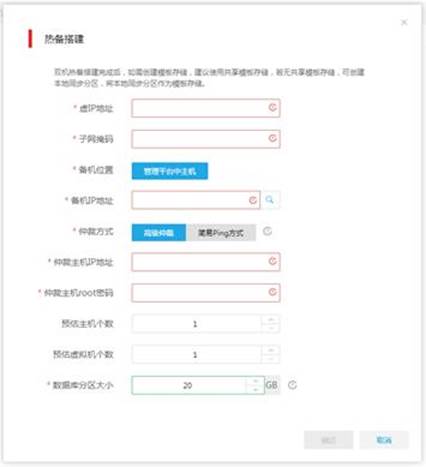
2.8 Multiple types of clients for high quality
Multiple client systems meet the requirements of different scenarios, greatly extending the scope of application. VDI is flexible and malleable, so it is applicable to common service scenarios and can scale horizontally to meet the requirements of high-performance 3D rendering with the vGPU technology.
VOI local computing unleashes the full performance of the client and data is stored in the cloud, saving server resources and reducing investment costs.


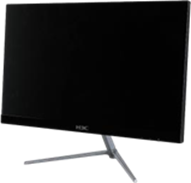
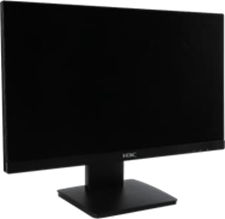
Multiple forms of products are available, including ARM architecture, x86 architecture, split machine, and all-in-one server. Old products are cost-effective and new products have high performance. The small size and integrated design greatly reduce noise. A thin client is embedded with the chip, requiring as low as 1/30 of the PC's power consumption. A fat client equipped with a desktop CPU has outstanding performance. Fanless design, mechanical hard drives, and other vulnerable components are used, so the clients are almost free from maintenance, have a longer service life, save more expenses, and produce less electronic waste than PCs. With the built-in Space OS system that H3C developed, the clients can be remotely managed after being unpackaged and connected to the network.
3. Solution advantages
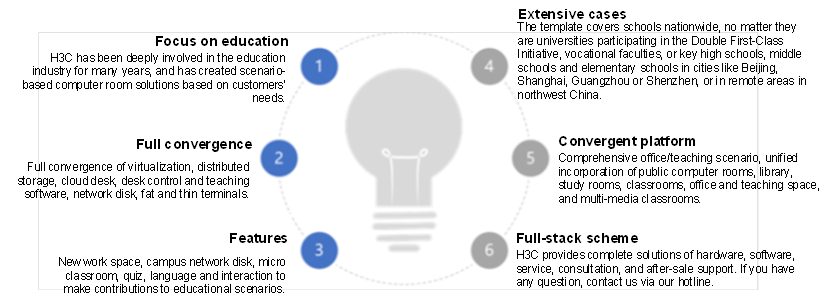
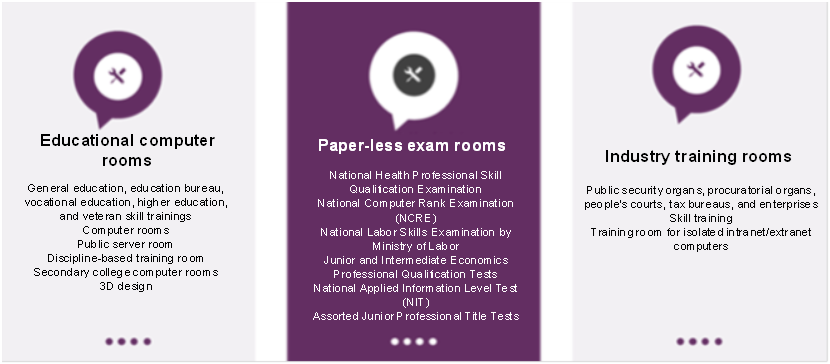
4. Application scenario

5. Solution benefits
6. Success cases
